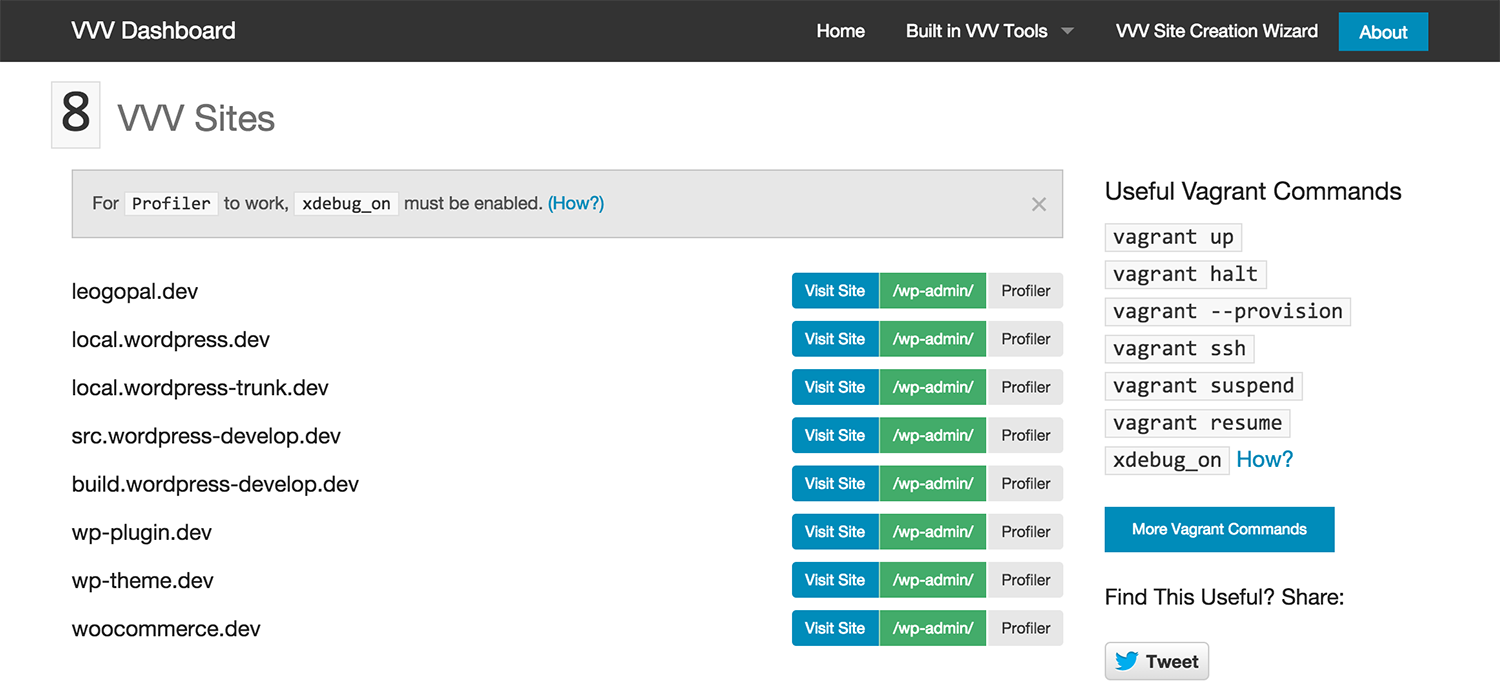VVV-Dashboard is a new tool that provides an interface for managing your Varying Vagrant Vagrants installations. Inspired by Variable VVV, a script that makes it easy to create and delete sites, Leo Gopal made VVV-Dashboard to complement it.
Gopal is a WordPress developer from Cape Town, South Africa. “I installed my first WordPress site seven years ago while in high school and started creating sites for clients ever since. Only recently, after Matt’s Five for the Future speech, did I decide to come out and offer what I have to everyone, more freely,” he said. VVV-Dashboard is one of his first public contributions.
The tool was designed to work with Variable VVV but can be used without it. “Because VVV is very terminal oriented, it’s easy to forget commands when you need them. For example, you might forget to ‘vagrant up –provision’ when working with Variable VVV (and other site creators),” Gopal said. VVV-Dashboard adds a quick reference page inside your vvv.dev site for commands and includes a list of all your Vagrant installs.
The title of the page displays how many VVV sites you have installed on your machine. Each site and its admin are linked, along with a profiler button that offers a quick overview. In order for the profiler to work, you must have Xdebug turned on.
Many developers end up with a long list of dev sites, and it can be difficult to remember what sites are active and where they are located. The VVV-Dashboard interface saves you time with a convenient list and might even inspire you to perform a cleanup of sites no longer in use.
In the next few releases, Gopal plans to include more basic site info in the dashboard, such as whether or not WP_Debug is enabled, an indicator for if Xdebug is on/off, the current active theme, etc. Variable VVV recently added a blueprints feature, which allows you to set up different plugins, themes, mu-plugins, options, or constants that will be installed to a new site you create. Gopal plans to create a few blueprint examples and add them to VVV-Dashboard.
VVV-Dashboard is licensed under the GPL V2. It adds a friendly layer between you and your VVV sites to make management more convenient and efficient. Check out the project on GitHub where you’ll find complete installation instructions. If you have any tips on how to improve the project, make sure to leave your feedback for the developer.

Great addition – thanks for open sourcing it.